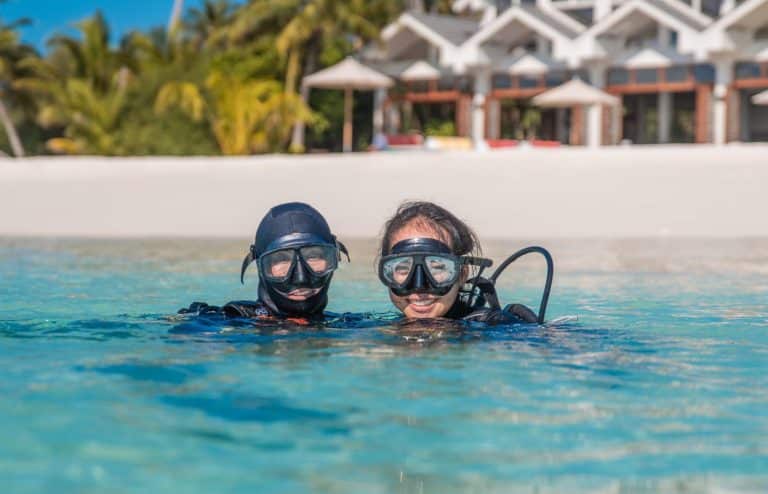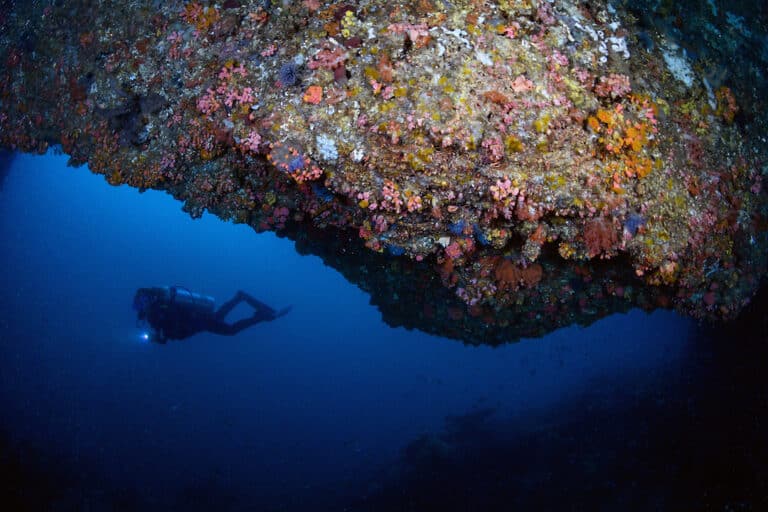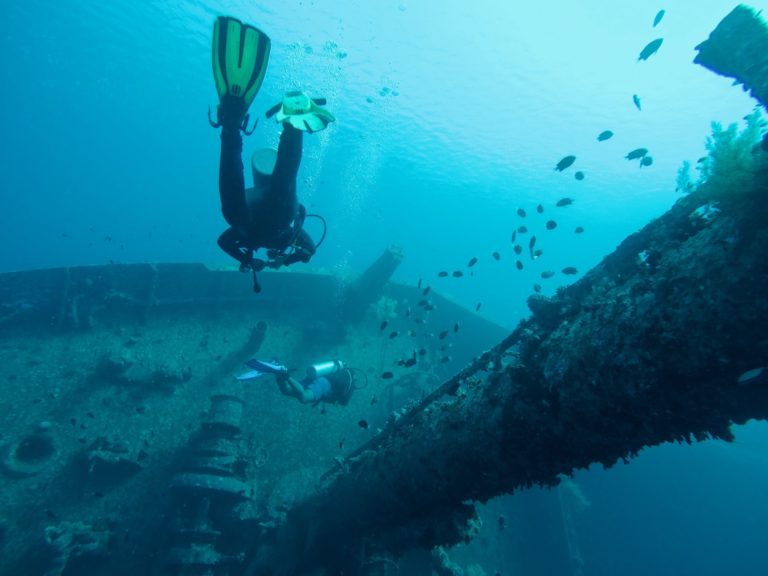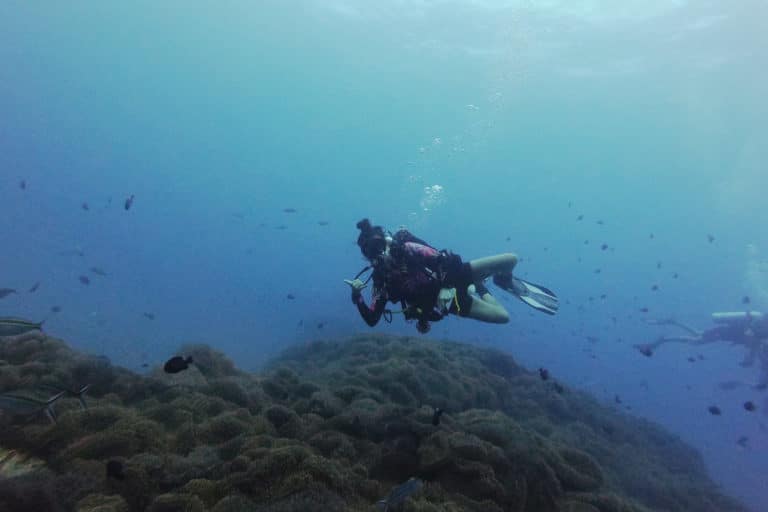A Buddy Check is very important before every scuba dive. But the steps are sometimes difficult to remember, especially if you have just completed your Open Water course. This is why we use a BWRAF scuba buddy check acronym to help us remember the steps and the order to complete a safety check before every dive!
The BWRAF is the pre-dive safety procedure to ensure you are familiar with your buddy’s equipment configuration and that their gear is fully functioning. Here are a few of our favorite BWRAF buddy check acronyms.
BWRAF Scuba Meaning
You should only complete the BWRAF buddy check when both you and your buddy have your full kit on, and before you descend for the dive. You and your buddy can check each other’s equipment at the same time using the following steps. The official acronym for BWRAF is:
B – BCD
This is where you check your buddy’s BCD and that it works properly. Buoyancy Control Devices can differ due to different brands and models.
It is important to note where your buddy’s inflator hose is, and the different buttons to inflate and deflate. Check that the BCD can power inflate, deflate, and orally inflate. This is also to ensure there are no holes or leaks in the BCD.
W – Weights
You should note where your buddy’s weights are so that you can release them in an emergency. Most people will wear a weight-belt and it should be a right-hand release. If they are using an integrated weight system and weight pockets, then you should familiarize yourself with their system.
It is very common for beginners and professionals to forget their weights! This can be especially annoying after a long swim to the dive-site so this step is very important!
Read More: Why Do We Need Weights in Scuba Diving?
R – Releases
The clips, buckles, and straps of your buddy’s BCD are also called ‘releases.’ This is because they should be easily ‘released’ in an emergency. You should note where all of the releases are and that they are done up. You should make sure the stomach buckle is attached, the shoulder straps are secure, and the tank band is holding the scuba tank securely.
A – Air
First, you should ensure your buddy’s tank valve is opened fully! You will then check that the regulator can deliver air to two people simultaneously in the event of an ‘out-of-air’ situation.
To do this check, your buddy will breathe from their primary second stage, while you breathe from their secondary alternate (the yellow one) at the same time. You will also check the SPG at the same time to make sure the regulator can sustain two people breathing from it.
If the needle moves up and down, there may be something wrong with the regulator, or the tank valve is partially closed.
F – Final OK
This is where you will make sure your buddy has their mask and fins ready. If they are wearing a dive computer and compass, you will make sure these are secure and set to the right mode.
Learn more about the SCUBA acronyms we use, and what they mean.
Scuba Buddy Check Acronyms To Remember
Here are some of our favorite and funny BWRAF scuba acronyms:
Bruce Willis Ruins All Films
Bruce Willis Rocks All Films
Big White Rabbits Are Fluffy
Because We Really Aren’t Fish
Burger With Relish And Fries
Breakfast with Rice And Fish
Big Whales Release Amazing Farts
Naughty Adult Only BWRAF Acronyms
Big Willies Really Are Fun
Bangkok Women Really Are Fellas
Blowjobs Will Ruin All Foreplay
and there’s a few more that we won’t post here…
Diving Acronyms PADI & Other Agencies
PADI teaches Begin With Review And Friend
RAID teaches B.R.A.I.D (Buoyancy & Weights, Releases & Regulators, Air, Instruments, Diver OK to dive?)
BSAC teaches B.A.R (Buoyancy, Air, Releases)
SDI teaches A.B.C.D (Air, BCD, Computer, Dive Gear)










